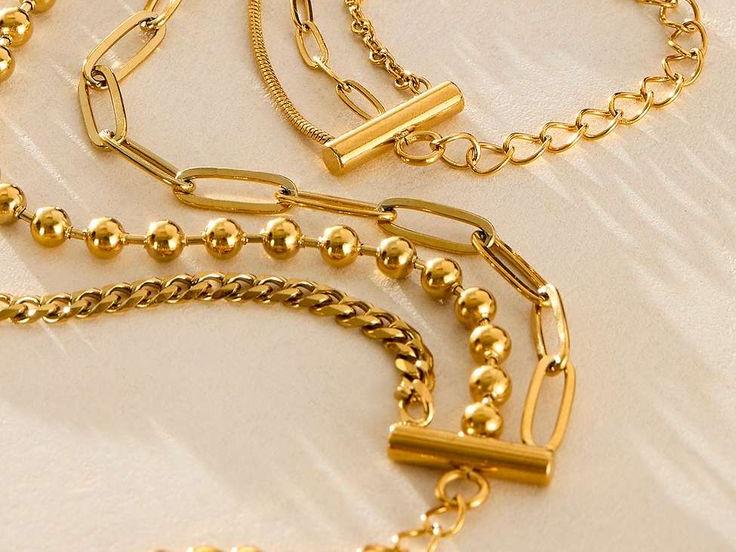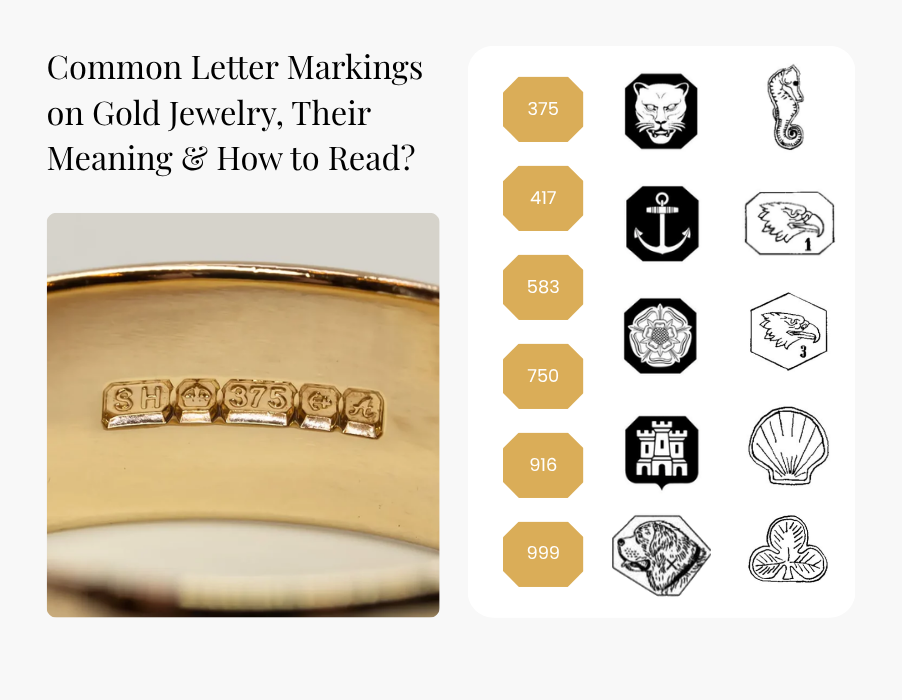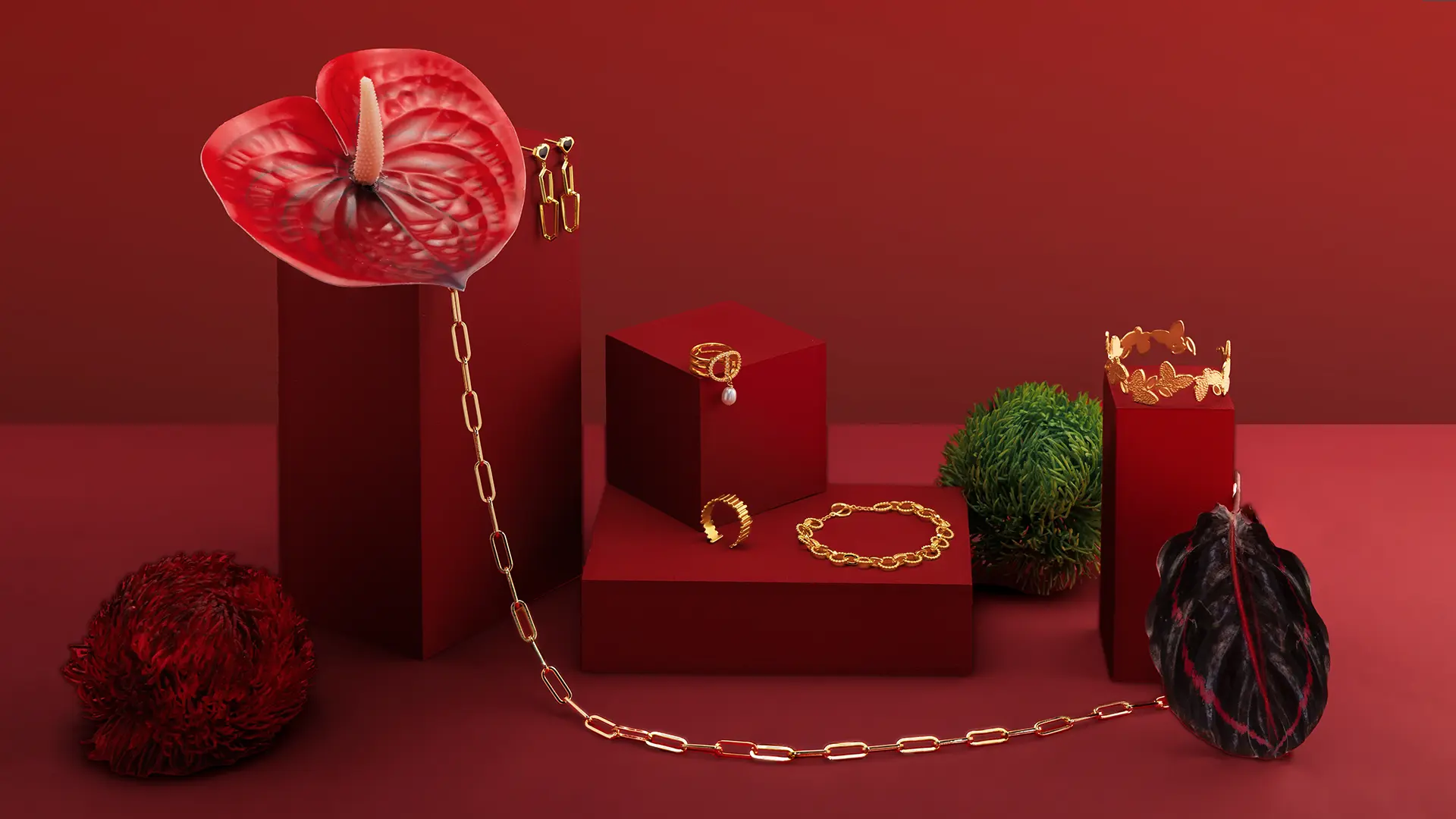In the jewelry industry, pieces are generally grouped into three main categories: fine, demi-fine, and semi-fine jewelry. From the gleam of fine jewelry to the subtle shine of demi fine pieces and to the trendy style of semi fine items, the jewelry industry offers a lot of beautiful choices. But what exactly is the difference between fine vs demi fine jewelry vs semi fine pieces? Knowing how they compare with one another can help you decide which is best for your unique style or jewelry brand.
What is Fine Jewelry?
What is considered fine jewelry is the epitome of luxurious jewelry. Fine jewelry represents the highest tier of jewelry craftsmanship. They are made from precious metals and gemstones like solid gold, platinum, diamonds, rubies, sapphires, and emeralds. These jewelry pieces are extremely durable, won’t tarnish, last for decades when properly maintained, and have high resale/investment value.
Fine jewelry is quite expensive because of the premium materials and advanced artisanal skills used in the making. They are targeted towards collectors, investors, affluent consumers seeking heirloom-quality pieces, and luxury status symbols for special occasions like engagements, anniversaries, and milestone celebrations.
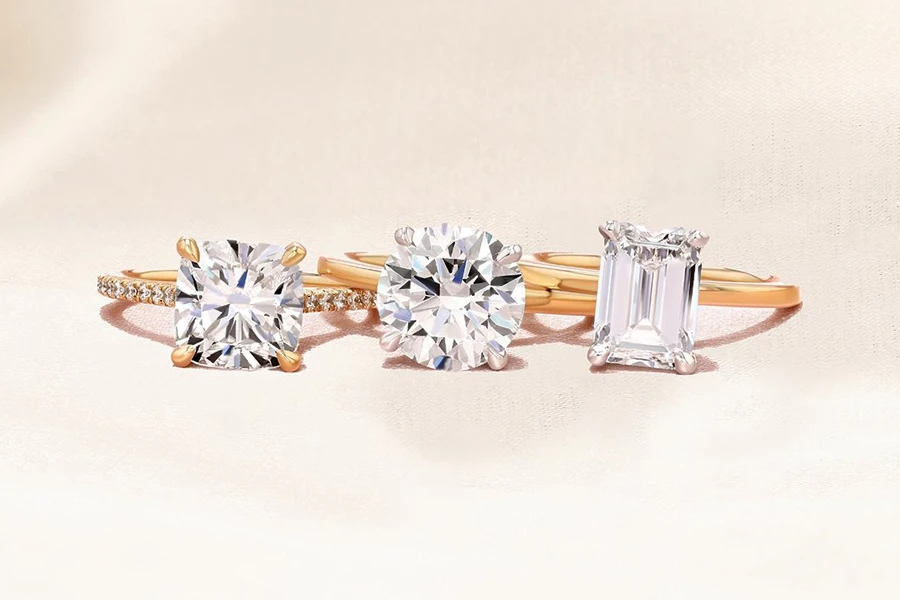
What is Demi Fine Jewelry?
Demi fine jewelry occupies a unique niche, as they provide a balance between fine and semi fine jewelry. They offer a blend of quality and affordability, thus capturing customers who want quality but without the steep price tag.
These jewelry pieces are made with precious metals in lower concentrations (such as gold vermeil, gold filled, and sterling silver) and are integrated with semi-precious stones or lab-grown gemstones. They still require detailed craftsmanship, but artisans may incorporate trends and modern designs to make them more appealing to customers.
Demi fine jewelry lasts long if properly maintained, have moderate tarnish resistance, and are averagely cost. They are targeted towards style-conscious customers seeking quality without full luxury investment.
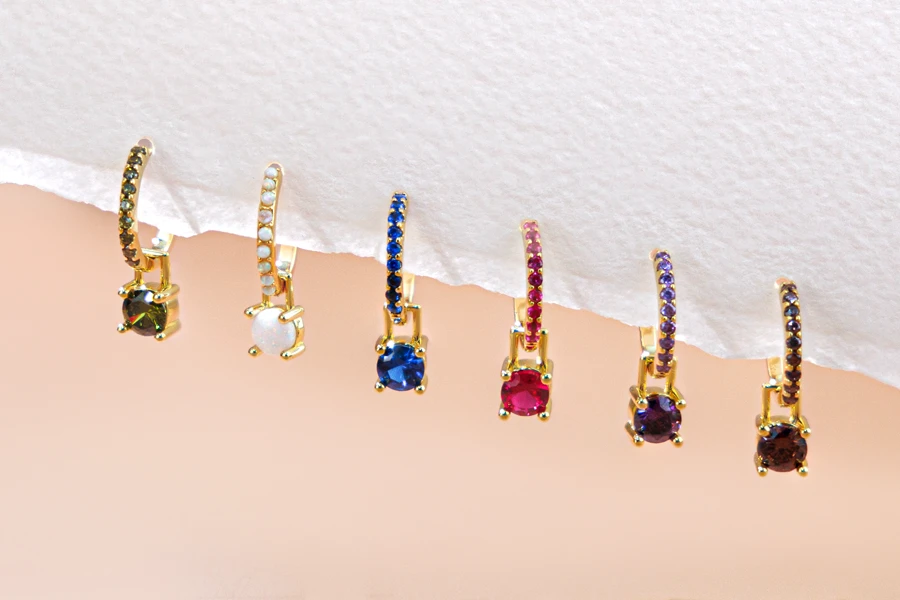
What is Semi Fine Jewelry?
Semi fine jewelry is also known as fashion or costume jewelry. They are made with base metals like brass, copper, or sterling silver, alongside cubic zirconia and synthetic gemstones. These pieces look like demi fine jewelry but they have key market distinctions.
While offering attractive designs (like gold plated jewelry) that follow current trends, these jewelry have limited durability and may tarnish or cause skin reactions over time. However, they are budget-friendly, and targeted towards customers considering affordability, fashion appeal, and trendy accessories.
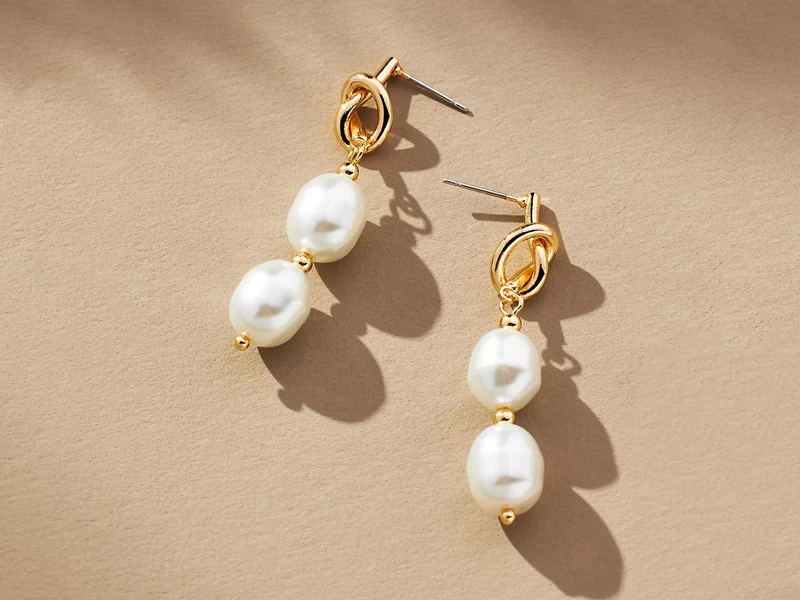
Differences between Fine vs. Demi Fine vs. Semi Fine Jewelry
Now that you know fine, demi fine, and semi fine jewelry meaning, compare how fine vs demi fine vs semi fine jewelry are different from one another.
| Feature | Fine Jewelry | Demi Fine Jewelry | Semi Fine Jewelry |
| Definition | High-end jewelry made with precious metals and gemstones | Mid-range jewelry bridging fine and fashion jewelry | Fashionable jewelry with quality finishes |
| Metals Used | Solid gold, platinum | Gold vermeil, gold-filled, sterling silver | Gold-plated brass, sterling silver |
| Gemstones | Natural diamonds, rubies, sapphires, emeralds | Semi-precious stones, lab-grown gems | Cubic zirconia, synthetic gems |
| Durability | Extremely durable, heirloom-quality | Durable with proper care | Lower durability, may tarnish quickly |
| Price Range | $$$$ – Luxury pricing | $$ – Mid-range affordability | $ – Budget-friendly |
| Target Audience | Luxury buyers, collectors, investors | Style-conscious shoppers on a budget | Trend-driven consumers and gift buyers |
| Occasion Suitability | Weddings, heirlooms, special events | Daily wear, professional settings | Casual wear, fashion accessories |
| Examples of Brands | Tiffany & Co., Cartier, Bulgari | Mejuri, BaubleBar, Monica Vinader | Kendra scott, Ana Luisa, Abbott Lyon |
1. Materials Used
Fine jewelry is made with the highest quality of materials, demi fine jewelry uses average-quality materials, and semi fine jewelry utilizes lower material quality.
Fine Jewelry
- 9K-24K solid gold (yellow, white, or rose) and platinum
- Fine silver and sterling silver (occasionally for high-end artisanal pieces)
- Natural diamonds, rubies, sapphires, emeralds
- Other certified natural gemstones
Demi Fine Jewelry
- Gold filled jewelry (bonded 5% gold layer over a base metal)
- Gold vermeil jewelry (sterling silver base plus at least 2.5 microns gold plating)
- Sterling silver (925) and rhodium-plated silver
- Semi-precious stones (e.g., topaz, citrine, amethyst, garnet)
- Lab-grown diamonds or moissanite
- Freshwater pearls
Semi Fine Jewelry
- Gold plated brass or copper
- Gold plated stainless steel (PVD)
- Sterling silver (925)
- Cubic Zirconia (CZ)
- Synthetic or simulated gemstones
- Glass stones, resin inlays
- Imitation pearls
2. Durability and Longevity
Fine Jewelry
Fine jewelry is built to last for decades even generations thanks to high-quality materials and expert craftsmanship.
Pieces made from 9K–24K solid gold (yellow, white, or rose), platinum, and occasionally fine or sterling silver resist tarnishing and maintain their shine with proper care. Natural gemstones like diamonds, rubies, sapphires, and emeralds add exceptional durability; diamonds and corundum stones (rubies and sapphires) can withstand daily wear, while emeralds last beautifully with mindful care. Together, these precious materials allow fine jewelry to stand the test of time and become meaningful family heirlooms.
Demi Fine Jewelry
Demi fine jewelry offers better durability than semi-fine pieces, though it still sits below fine jewelry in long-term longevity. With proper care and storage, these pieces can last several years without noticeable fading or damage. However, plated surfaces may eventually wear over time—especially with frequent exposure to water, sweat, saltwater, lotions, or chemicals.
Common materials used in demi fine jewelry include:
- Gold filled jewelry: Highly durable, lasting 3–5 years with proper care.
- Gold vermeil jewelry: Typically lasts 1–2 years.
- Sterling silver (925) and rhodium-plated silver: Both offer good resistance to tarnish and maintain shine when regularly cleaned.
- Semi-precious stones: Topaz, citrine, amethyst, and garnet are naturally durable and ideal for everyday wear.
- Lab-grown diamonds or moissanite: Extremely hard and scratch-resistant, adding long-lasting sparkle.
- Freshwater pearls: Softer and more delicate but can retain their luster for years with proper handling.
Overall, demi fine jewelry balances durability, beauty, and affordability—making it a strong choice for brands seeking elevated yet accessible pieces.
Semi Fine Jewelry
Semi fine jewelry has lower durability than fine or demi fine pieces. While suitable for short-term wear or occasional use, these pieces are more prone to surface wear, tarnishing, or fading over time. Proper care can extend their lifespan, but they generally won’t last as long as higher-quality jewelry.
- Gold-plated brass or copper: Gold plating lasts at least 6 months before showing wear.
- PVD gold-plated stainless steel: More durable, with plating lasting 2 years or more.
- Sterling silver (925): Maintains shine well with proper care.
- Gemstones and inlays: CZ, synthetic stones, glass, resin, and imitation pearls provide aesthetic appeal but are less durable than natural gemstones.
Semi fine jewelry offers an affordable, stylish option but will eventually show surface wear with frequent use, making it best suited for trend-focused or seasonal collections.
3. Resale and Investment Value
Fine Jewelry
Beyond the current value, fine jewelry may appreciate, particularly those featuring high-quality diamonds, rare gemstones, or made by well-known luxury brands. It’s a profitable investment, as it can be resold, appraised, insured, and passed down as an heirloom.
Demi Fine Jewelry
Demi fine jewelry has little to no resale value. Rather, it can be repurposed for another piece or sold as a secondhand item. While it’s made with better materials than semi fine jewelry, it lacks the precious metal purity and gemstone grading that typically drives jewelry value.
Semi Fine Jewelry
Semi fine jewelry does not have any resale or investment value. It’s manufactured for fashion and not considered worthy in the resale markets because it’s made with lower quality materials. In fact, once the plating fades or the jewelry tarnishes, its worth is gone.
Similarities between Fine vs Demi Fine vs Semi Fine Jewelry
As much as there are clear differences between fine vs demi fine jewelry vs semi fine pieces, they share some similarities, which includes:
All Use Sterling Silver in Collection
While fine jewelry basically uses solid gold or platinum materials, sterling silver is still commonly utilized across the three categories. Fine jewelry may integrate it in high-end artisan pieces, demi fine jewelry uses it as the base metal for gold vermeil, and semi fine jewelry uses it as either a plated or standalone option.
All Offer Aesthetic Appeal
Despite the differences in materials and value, the three categories still focus on the optimal goal of jewelry – beauty. While fine jewelry is made to exude luxury and semi fine jewelry is made to move with trends, they are all crafted to be visually attractive and make the wearer look more elegant.
Available in Trendy & Timeless Styles
Fine, demi fine, and semi fine jewelry are designed to reflect fashion and evergreen trends. Even fine jewelry that’s primarily created to serve as heirloom pieces, which can be passed down to generations, are crafted skillfully to blend into any trend that comes in the future.
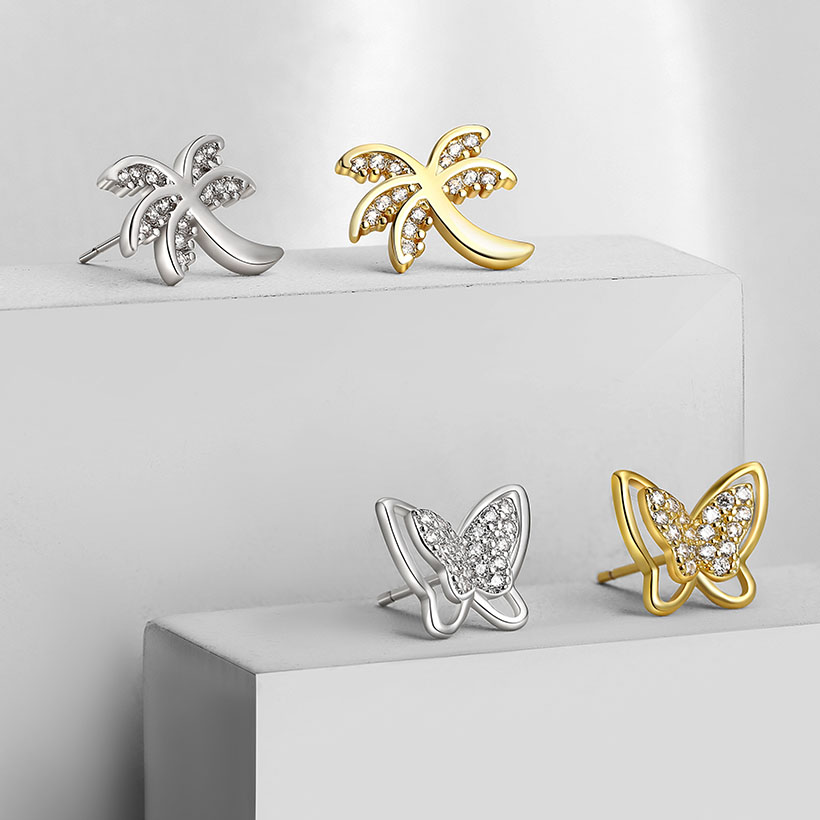
Common Misconceptions
Over the years, there have been some misconceptions about these jewelry categories making the rounds, such as:
Demi Fine vs Semi Fine: Are They the Same?
When you consider demi fine vs semi fine jewelry closely, you will discover that they are not the same. Demi fine refers to higher-quality pieces with lower concentration of precious metal bases (like sterling silver jewelry) and thick gold vermeil or gold-filled finishes.
In contrast, semi fine jewelry is a more loose category. It includes gold plated or alloy-based jewelry that are combined with synthetic stones. While it may look polished and well-made, it doesn’t use the same material quality as demi fine jewelry. In fact, it tarnishes quickly and may not last beyond 2 years.
Price Doesn’t Always Reflect Quality
Whenever anyone tells you that “the higher the price, the higher the quality” in jewelry shopping, leave with your money. This is one of the biggest myths.
While quality impacts prices, brand name markup, trendy packaging, and influencer marketing can also drive up the cost of jewelry. For example, a semi fine necklace with gold plating might cost more than a demi fine necklace made with gold vermeil – just because of the brand attached.
Instead of judging the quality of jewelry pieces by price alone, you should look at the material composition, craftsmanship, and after-sales guarantee.
Does Fine Jewelry Tarnish?
No, fine jewelry does not tarnish, especially when made from solid gold (14K and above), platinum, or high-quality white gold. These are noble metals, which means they don’t react with oxygen or moisture in the air.
Although, sterling silver is used sometimes in fine jewelry, causing it to tarnish over time because of its copper content. But it’s nothing to worry about as tarnish on silver can be easily removed with proper cleaning.
Does Demi Fine Jewelry Tarnish?
Demi fine jewelry can resist tarnish a little bit, but with time, they eventually tarnish. However, tarnishing can be delayed if they are not frequently exposed to water, sweat, or perfumes.
Is Fine Jewelry Real?
Yes. Fine jewelry is real because it’s made from genuine precious metals like solid gold, sterling silver, or platinum, and often features real diamonds or natural gemstones.
What Jewelry Brands Use Each Category?
These are some top jewelry brands that strategically position themselves within specific categories that align with their brand values and target audience.
Fine Jewelry Brands
- Tiffany & Co.: This brand epitomizes American luxury jewelry craftsmanship and are renowned for their iconic blue boxes, exceptional diamonds, and timeless designs. The brand is popularly tagged with elegance, romance, and high-quality fine jewelry.
- Cartier: This brand stands as the “jeweler of kings and king of jewelers.” It’s a French luxury house that’s known for its innovative designs, exceptional craftsmanship, and iconic pieces like the Love bracelet and Panthere collection.
- Bulgari: This brand brings Italian luxury and bold design to fine jewelry. Bulgari combines traditional craftsmanship with contemporary aesthetics, appealing to those who want unique, statement jewelry. They commonly use colored gemstones, serpent motifs, and architectural-inspired designs.
Demi Fine Jewelry Brands
- Mejuri: A Canadian brand revolutionizing everyday jewelry, with specialty in modern, minimalist demi fine jewelry made from 14K gold and sterling silver. Mejuri jewelries are crafted to be sophisticated to transition seamlessly from day to night.
- BaubleBar: This brand modifies fashion jewelry by offering trend-forward accessories at affordable prices. Their demi fine collection features gold vermeil and sterling silver pieces that provide elevated styles without the high price tag.
- Monica Vinader: The British jewelry brand creates contemporary pieces using ethical practices and sustainable materials. Monica Vinader appeals most especially to modern women seeking meaningful, quality jewelry at an affordable price.
Semi Fine Jewelry Brands
- Kendra Scott: This brand is known for its colorful statement jewelry with customizable designs. Kendra Scott focuses on accessible luxury, offering trendy pieces that allows customers to express personal style through bold colors and versatile designs.
- Ana Luisa: A contemporary jewelry brand that prioritizes sustainability and ethical production. Ana Luisa creates fashion-forward pieces using recycled metals and responsible sourcing.
- Abbott Lyon: Known for their trendy designs, layering pieces, and personalized services, Abbot Lyon targets young customers seeking Instagram-worthy jewelry that reflects their individual style.
Which Category Is More Suitable for Your Jewelry Brands?
Do you have a jewelry brand and trying to figure out which of the 3 jewelry classifications is best for you? Follow these pointers:
- Fine Jewelry: Most suitable for luxury brands or those focused on heirloom-quality pieces, and would like to offer timeless quality with high-end pricing. Fine jewelry attracts affluent customers, collectors, or shoppers looking for investment-worthy pieces.
- Demi Fine Jewelry: Perfect for modern, style-forward brands that want to offer affordable luxury. It appeals to younger professionals, gift buyers, and fashion-conscious customers who care about quality but don’t have a robust budget.
- Semi Fine Jewelry: Works well for trend-driven brands focused on seasonal styles, influencer collaborations, or fast fashion accessories. It allows for creative flexibility and lower production costs, attracting a wider audience on a lower budget.
In short:
- Go FINE if your brand is premium and timeless.
- Go DEMI FINE if you want affordable elegance with long-term wearability.
- Go SEMI FINE if you’re trend-focused and targeting fast fashion lovers.
Conclusion
The distinction between fine vs demi fine jewelry vs semi fine pieces lies in the materials used in making them, which in turn influence their durability, longevity, and price range. For high-end but expensive pieces, choose fine jewelry. For slightly affordable yet luxurious jewelry, choose demi fine jewelry. For budget-friendly pieces, select semi fine jewelry.
Above all, it’s important that you partner with a professional jewelry manufacturer like Clingold to understand your brand values and target market for more effectiveness.
